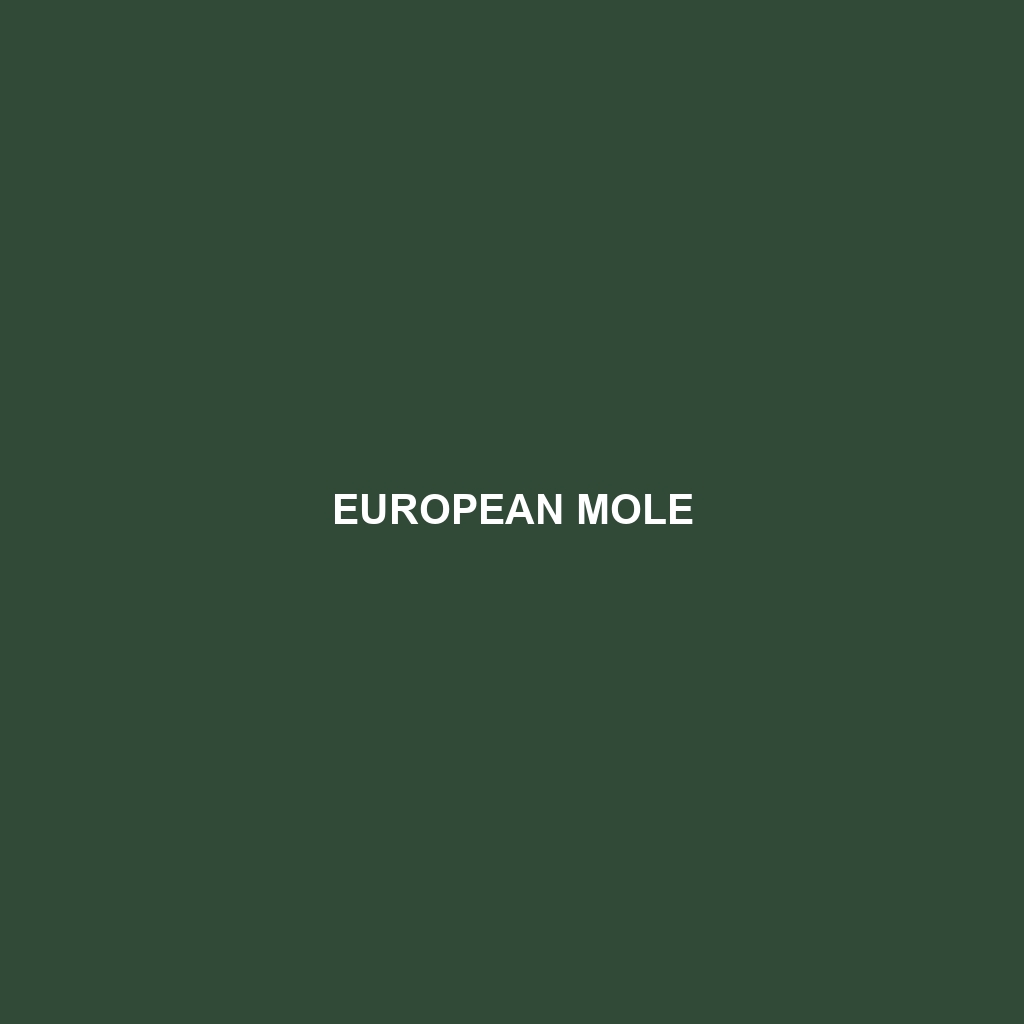Species Description: European Mole
Common Name: European Mole
Scientific Name: Talpa europaea
Habitat
The European Mole primarily inhabits the moist, loamy soils of Europe and parts of Asia. It is commonly found in grasslands, gardens, woodlands, and fields, where the soil is rich in earthworms and other invertebrates. These burrowing mammals thrive in temperate climates, making them prevalent across the UK, France, Germany, and Eastern Europe.
Physical Characteristics
European Moles are relatively small mammals, measuring about 12 to 15 centimeters in length, with a weight ranging from 70 to 150 grams. Their bodies are cylindrical, facilitating effortless digging in the soil. They are characterized by velvety fur, which typically appears dark brown or slate gray, allowing them to blend well with their underground environments. Distinctive features include large, spade-like forelimbs that are adapted for burrowing and a pointed snout that aids in digging.
Behavior
The behavior of European Moles is predominantly solitary, with individuals establishing extensive tunnel systems to aid in their foraging and nesting. These nocturnal creatures are most active during the night, engaging in activities such as digging and searching for food. They are known for their unique locomotion underground, often creating complex tunnels that can extend several hundred meters. Their strong territorial instincts prevent them from inhabiting the same burrows as other moles.
Diet
The diet of the European Mole primarily consists of earthworms, but it also includes a variety of insects and grubs. They are known to consume up to 100% of their body weight daily, showcasing their high metabolic rate. The mole’s excellent sense of touch and smell help locate prey underground, making it an efficient forager.
Reproduction
European Moles typically breed in late winter to early spring, with a gestation period of about 30 days. Females give birth to a litter of 2 to 7 young, which are born hairless and blind. The young moles begin to venture above ground at around four weeks of age and become independent by three months, often leading solitary lives thereafter.
Conservation Status
Currently, the European Mole is classified as a species of Least Concern by the IUCN Red List. However, habitat loss and agricultural practices pose potential threats to their populations in certain regions. Conservation efforts are focused on maintaining healthy ecosystems that support their natural habitats.
Interesting Facts
– European Moles have an extraordinary ability to dig at a rate of up to 18 meters per hour, showcasing their impressive physical adaptations.
– They possess a unique biological adaptation that allows them to consume food quickly, even if it is still alive, due to their preference for fresh prey.
Role in Ecosystem
European Moles play a vital role in the ecosystem by aerating the soil as they dig, which contributes to enhanced plant growth. Their feeding habits help control invertebrate populations, while their tunnels provide habitats for various other species, thus promoting biodiversity in their environments.
